Images for kentucky coffee tree
- Report images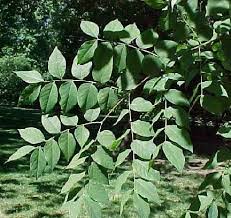
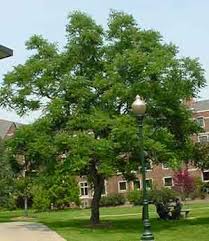
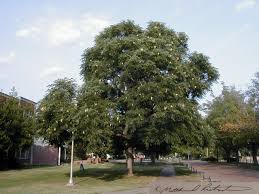

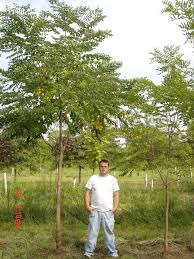
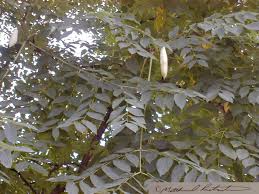
The Kentucky Coffeetree, Gymnocladus dioicus, is a tree in the subfamily Caesalpinioideae of the pea family Fabaceae, native to the midwest of North America. The range is limited, occurring from Southern Ontario, Canada and in the United States from Kentucky (where it was first encountered by Europeans) and western Pennsylvania in the east, to Kansas, eastern Nebraska, and southeastern South Dakota in the west, and to northern Louisiana in the south. It was formerly the state tree of Kentucky.
Varies from 18 to 21 meters (60–70 feet) high with a spread of 12–15 meters (40–50 feet) and a trunk up to one meter (3 feet) in diameter. A 10-year-old sapling will stand about 4 meters (13 feet) tall. It usually separates 3 to 4½ meters (10–15 feet) from the ground into three or four divisions which spread slightly and form a narrow pyramidal head; or when crowded by other trees, sending up one tall central branchless shaft to the height of 15–21 m (50–70 ft). Branches stout, pithy, and blunt; roots fibrous.[2]
The Kentucky Coffeetree is a relatively fast-growing tree and generally grows in parks and along city streets for ornamental purposes. The tree is typically long-lived however often appears dead for the first six months of its growth. This is because the Kentucky Coffeetree sheds its leaves early during the late spring and therefore appears bare for up to 6 months. The naked appearance of the tree is reflected through the Kentucky Coffeetrees genus name. (Barnes, Wagner at el. 1977) from Michigan Trees.
Like the Sumac, branches are totally destitute of fine spray; smaller branches are thick, blunt, clumsy and lumpish. While other trees lose their leaves, along their twigs and branchlets are borne the buds, the hope and the promise of the coming year. But the Gymnocladus seems so destitute of these that the French in Canada named it Chicot, the dead tree. Even when spring comes, it gives no apparent recognition of light and warmth until nearly every other tree is in full leaf. The casual observer says it bears no winter buds, but there is a tiny pair, wrapped in down and wool, lying sleeping in the axil of every last year's leaf.[2]
Among the trees of the eastern United States, there are two others with similarly large leaves: the Honey locustDevil's Walking-Stick (Aralia spinosa). The expanding leaves are conspicuous because of the varied colors of the leaflets; the youngest are bright pink, while those which are older vary from green to bronze.[2] (Gleditsia triacanthos) and the
The bark is ash-gray and scaly, flaking similarly to black cherry, but more so. The flowers are dioecious, and the fruit is a hard-shelled bean in heavy, woody, thick-walled pods filled with sweet, thick, gooey pulp. The shape of the pods varies somewhat: pod length ranges from about 12.7 to 25.4 cm; unfertilized female trees may bear miniature seedless pods. The beans contain the toxin cytisine.
- Bark: Dark gray, deeply fissured, surface scaly. Branchlets at first coated with short reddish down.
- Wood: Light brown; heavy, strong, coarse-grained; durable in contact with the ground, takes a fine polish. Sp. gr., 0.6934; weight of cu. ft., 43.21 lb (19.60 kg).
- Winter buds: Minute, depressed in downy cavities of the stem, two in the axil of each leaf, the smaller sterile. Bud scales two, ovate, coated with brown tomentum and growing with the shoot, become orange green, hairy and about one inch long, before they fall.
- Leaves: Alternate, bi-pinnately compound, ten to fourteen pinnate, lowest pinnae reduced to leaflets, the other seven to thirteen foliate. One to three feet long, eighteen to twenty-four inches broad, by the greater development of the upper pairs of pinnae. Leaf stalks and stalks of pinnae, are terete, enlarged at base, smooth when mature, pale green, often purple on the upper side. Leaflets ovate, two to two and one-half inches long, wedge-shaped or irregularly rounded at base, with wavy margin, acute apex. They come out of the bud bright pink, but soon become bronze green, smooth and shining above. When full grown are dark yellow green above, pale green beneath. In autumn turn a bright clear yellow. Stipules leaf-life, lanceolate, serrate, deciduous.
- Flowers: June. Dioecious by abortion, terminal, greenish white. Staminate flowers in a short racemen-like corymb three to four inches (102 mm) long, pistillate flowers in a raceme ten to twelve inches (305 mm) long.
- Calyx: Tubular, hairy, ten-ribbed, five-lobed; lobes valvate in bud, acute, nearly equal.
- Corolla: Petals five, oblong, hairy, spreading or reflexed, imbricate in bud.
- Stamens: Ten, five long and five short, free, included; filaments thread-like; antehrs orange colored, introrse; in the pistillate flower small and sterile.
- Pistil: Ovary superior, sessile, hairy, contracted into a short style, with two stigmatic lobes; ovules in two rows.
- Fruit: Legume, six to ten inches (254 mm) long, one and one-half to two inches wide, somewhat curved, with thickened margins, dark reddish brown with slight glaucous bloom, crowned with remnant of the styles. Stalks and inch or two long. Seeds six to nine, surrounded by a thick layer of dark, sweet pulp.[2]
Taxonomy
Gymnocladus is of Greek derivation and refers to the stout branches destitute of spray.[2]
It is one of three species in the genus Gymnocladus, the other two being native to eastern Asia. These are Chinese Coffeetree Gymnocladus chinensis in central China, and Burmese Coffeetree Gymnocladus burmanicus in Burma.
The name is sometimes hyphenated as 'coffee-tree'; the form 'coffeetree' used here is as used officially by the United States Forest Service.
Distribution
Widely dispersed, but rare.
The Kentucky Coffeetree, Gymnocladus dioicus, is considered a rare tree species. "Rare species are those that are so uncommon that they should be monitored to determine whether their populations are becoming threatened" (Wagner et al. 1977) from Michigan Trees.
The Kentucky Coffeetree is a "species of the midwestern states, reaching its northern limit in Michigan" (Barnes, Wagner et al. 1977) from Michigan Trees.
This tree usually occurs as widely dispersed individuals or small colonial groups with interconnected root systems. This tree is found in floodplains and river valleys but is also sometimes seen on rocky hillsides and limestone woods. In the northeastern part of its range, seemingly natural groves of this tree are actually associated with known prehistoric village sites. In some parts of its range, this tree may be used as an indicator of the presence of limestone or of calcareous soils.
There is a Kentucky coffeetree located at the Wisconsin Welcome Center in Beloit, WI on I-90. There are also some Kentucky Coffee trees on the Mount Vernon estate formerly occupied by General George Washington. Seeds and seed pods may be picked up along the path leading up to the mansion.
Cultivation
Kentucky Coffeetree is easy to grow from seed. Filing the seedcoat by hand with a small file, and then soaking the seeds in water for 24 hours will ensure rapid germination. Propagation is also easy from dormant root cuttings.
It forms large clonal colonies, reproducing by shoots sprouting from roots.
Trees prefer bottom lands, and a rich moist soil.[2] Its growth is largely unaffected by heat, cold, drought, insects, disease, road salt, ice, and alkaline soil.
The Kentucky Coffeehouse is typically found on "alluvial soils of river and flood plains and nearby terraces" (Barnes, Wagner at el. 1977) from Michigan Trees.
Toxicity
Toxic to animals. See veterinary link: http://www.library.uiuc.edu/vex/toxic/kentucky/kentucky.htm
Uses
| “ | When Kentucky was first settled by the adventurous pioneers from the Atlantic states who commenced their career in the primeval wilderness, almost without the necessaries of life, except as they produced them from the fertile soil, they fancied that they had discovered a substitute for coffee in the seeds of this tree; and accordingly the name of Coffee-tree was bestowed upon it. But when communication was established with the sea-ports, they gladly relinquished their Kentucky beverage for the more grateful flavor of the Indian berry; and no use is at present made of it in that manner.[2] | ” |
| —A. J. Downing | ||
In pleasure grounds it is not uncommon, since it is often planted because of its unique appearance and interesting character.[2]
The peculiarly late-emerging and early-dropping leaves, coupled with the fact that the large leaves mean few twigs in the winter profile, make it a tree that is ideal for urban shading where winter sunlight is to be maximized (such as in proximity to solar hot-air systems).
Food
The common name "coffeetree" derives from the use of the roasted seeds as a substitute for coffee in times of poverty. They are a very inferior substitute for real coffee, and caution should be used in trying them as they are poisonous in large quantities.

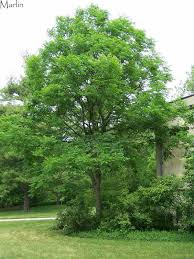




No comments:
Post a Comment